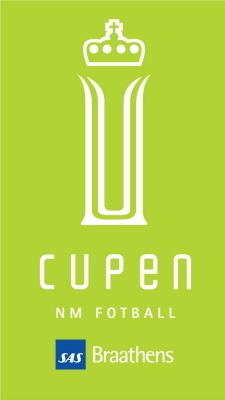Founded 1902 Website fotball.no Number of teams 272 | Region Norway | |
 | ||
Instances 2017 Norwegian Football Cup | ||
The Norwegian Football Cup (Norwegian: Norgesmesterskapet i fotball for herrer) is the main knockout cup competition in Norwegian football. It is run by the Football Association of Norway and has been contested since 1902, making it the oldest football tournament in the country. The tournament is commonly known as Cupen ("The Cup") or NM, an acronym formed from Norgesmesterskap ("Norwegian Championship"). These terms are used to describe both the men's and women's competitions. The equivalent competition for women's teams is the Norwegian Women's Football Cup.
Contents
The Norwegian Football Cup is a national championship, meaning that while the Norwegian Premier League may be the most prestigious competition to win, it is the winners of the Cup who are awarded the title "Norwegian football champions". This differs from, for example, English football, where the winners of the FA Premier League are the ones who become English champions.
The current Norwegian champions and holders of the cup are Rosenborg, who defeated Sarpsborg 08 2–0 in the 2015 final.
Format
The first rounds of the cup are played in April, around the same time as the Norwegian Premier League starts. The first few rounds are set up by the Norwegian Football Association, and the top premier league teams are usually pitted against fairly weak amateur teams, often in rural areas, on the amateur team's home pitch. Early upsets, where an amateur team knocks a professional team out of the tournament do happen occasionally. For example, in 2012 the Tippeliga teams Sandnes Ulf and Sogndal IL were knocked out in the first round by the third division (fourth tier) teams Staal Jørpeland IL and Florø SK respectively. Even if the amateur team loses, squaring off against a professional team may well be the highlight of their season.
Later matchups are drawn at random, the teams face off once, and the winner goes on to the next round. The final match is played at Ullevaal Stadium (national stadium) in November, and takes place near the end of the Norwegian football season.
The cup is very popular in Norway, and tickets for the final match are hard to get hold of, as the game usually sells out quickly. The supporters of the two teams playing in the final match are seated at the two short-ends of the pitch, while the more neutral supporters are seated by the long-ends. The match is also televised on national television.
History
The first cup was played in 1902, but was open for county champions only. This continued until 1933, when the cup was opened for all clubs of a certain standing. The competition was not nationwide until 1963. 1963 was the first year clubs from Northern Norway were allowed to participate, this was due to a poor communication system in the northern parts of Norway and to the belief that the clubs in the three northern counties could not compete on the same level as the southern clubs (Bodø/Glimt - one of the two northern newcomers - did stay in the cup to the fourth round that year).
Before the 2004 cup final, NRK awarded the 1986 final between Tromsø and Lillestrøm with the title Tidenes Cupfinale (Best cup final ever), and ex-Rosenborg striker Gøran Sørloth with Tidenes Cuphelt (Best cup hero ever).
Women
Since 1978, an official cup for women's clubs has also been played. The women's cup final is usually played on a Saturday, the day before the men's cup final. The 1978 cup final between BUL and Trondheims-Ørn was the only Norwegian cup final to be decided on penalties.
Before the 2006 final, the Norwegian Football Association decided that the Women's final would be played at Bislett Stadium instead of Ullevaal Stadion, which caused some debate. The Football Association claimed that two matches over one weekend would cause too much wear on the Ullevaal pitch, while representatives for the clubs claimed that the move was discriminating against women's football. When the semi-finals of the 2006 cup were drawn, all 4 clubs boycotted the draw in a protest against the move. [1]
